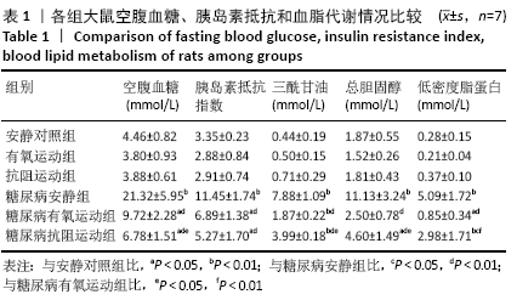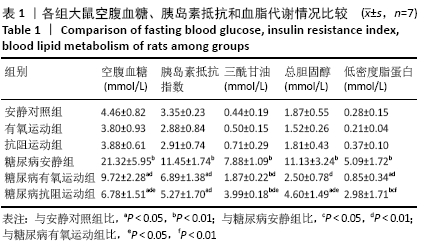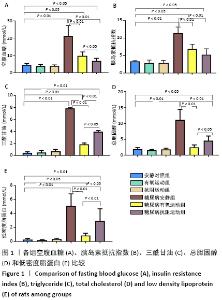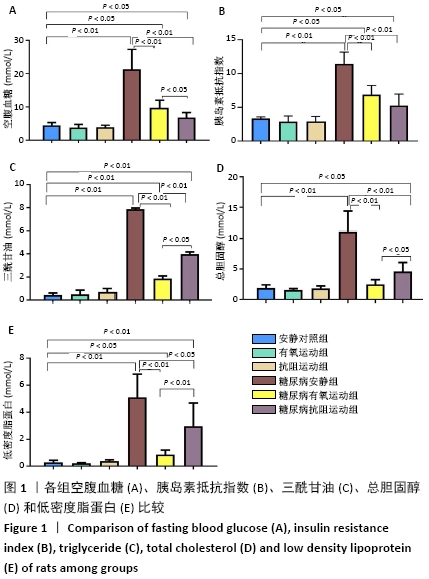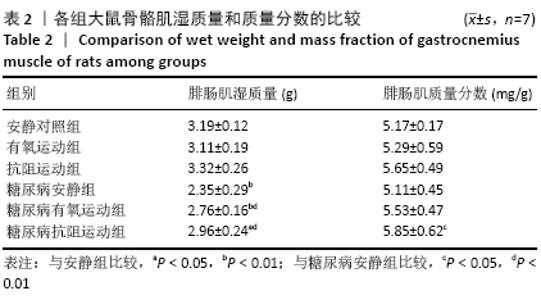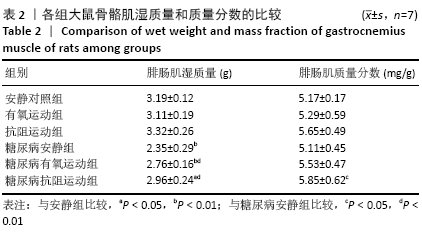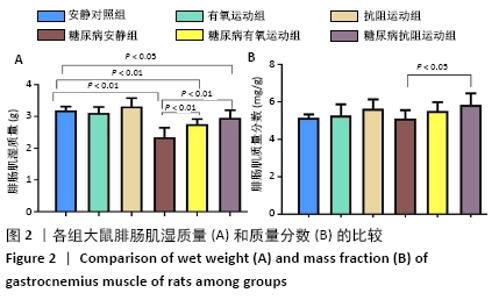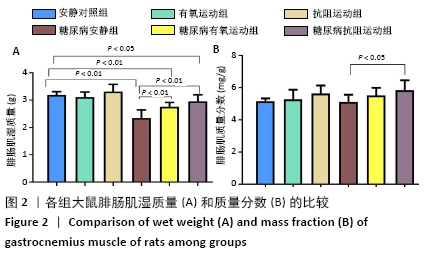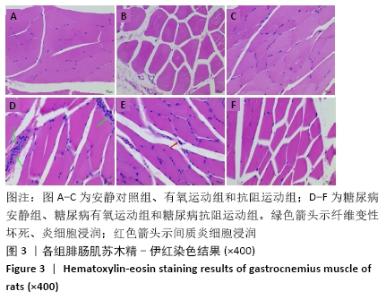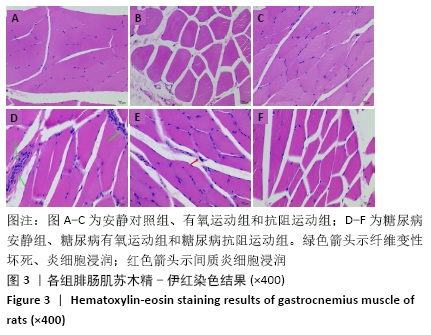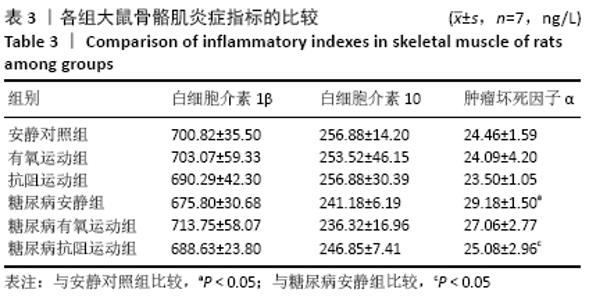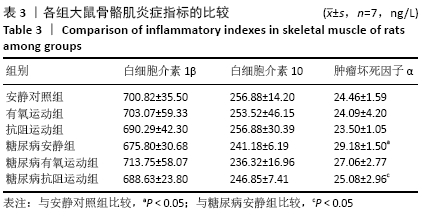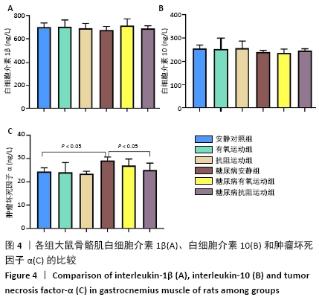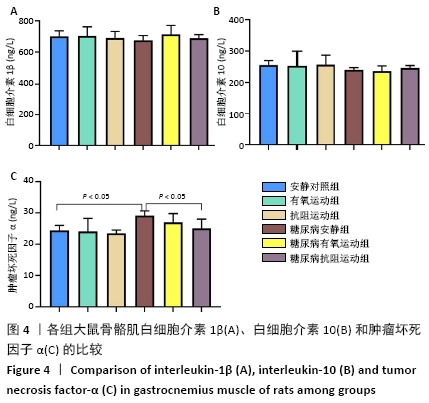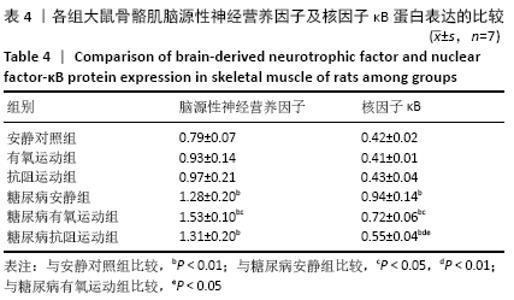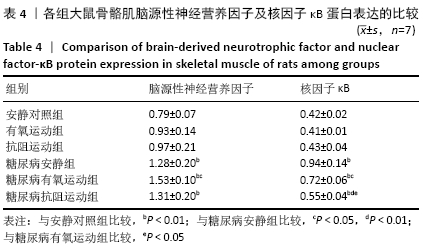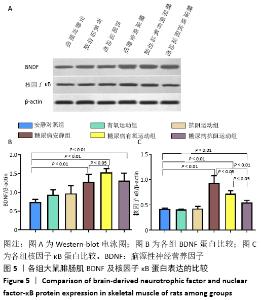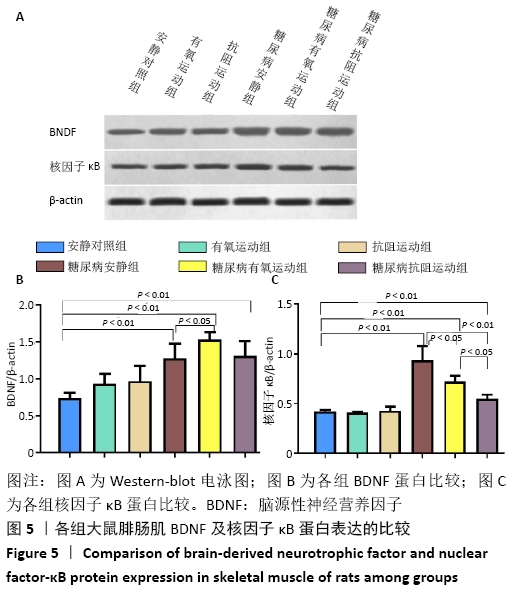[1] MATTHEWS VB, ÅSTRÖM MB, CHAN MHS, et al. Brain-derived neurotrophic factor is produced by skeletal muscle cells in response to contraction and enhances fat oxidation via activation of AMP-activated protein kinase. Diabetologia. 2009;52(7):1409-1418.
[2] FULGENZI G, HONG ZY, FRANCESCO TA, et al. Novel metabolic role for BDNF in pancreatic β-cell insulin secretion. Nat Commun. 2020;11: 1950.
[3] 唐量,亢依婷,尹博,等.负重爬梯与有氧跑台运动对糖尿病大鼠学习记忆能力的影响及其机制探讨[J].中国应用生理学杂志, 2017,33(5):436-440.
[4] 王力先.NF-κB信号通路与骨骼肌萎缩研究进展[J].生命的化学, 2015,35(2):188-192.
[5] 沈志祥,朱立勋,徐伟红.有氧运动对2型糖尿病大鼠AGE- RAGE轴及NF-κB通路的影响[J].昆明医科大学学报,2018,39(1):16-19.
[6] 李顺昌.耐力和抗阻运动对糖尿病大鼠心脏功能及结构的影响及机制研究[D].北京:北京体育大学,2017:34-35.
[7] 税晓平,李春莹,曹艳霞,等.有氧和抗阻运动干预2型糖尿病模型大鼠周围神经内质网应激相关蛋白的表达[J].中国组织工程研究,2021,25(11):1693-1698.
[8] 赵大林,李晶,马铁,等.有氧运动训练8周2型糖尿病模型大鼠骨骼肌磷脂酰肌醇3-激酶-蛋白激酶B信号转导通路的变化[J].中国组织工程研究,2019,23(23):3660-3666.
[9] SPARKS LM, JOHANNSEN NM, CHURCH TS, et al. Nine months of combined training improves ex vivo skeletal muscle metabolism in individuals with type 2 diabetes. J Clin Endocrinol Metab. 2013;98: 1694-1702.
[10] BRYAN CB, BRET HG. Exercise and Muscle Lipid Content, Composition, and Localization: Influence on Muscle Insulin Sensitivity. Diabetes. 2020;69(5):848-858.
[11] NERY C, MORAES SRA, NOVAES KA, et al. Effectiveness of resistance exercise compared to aerobic exercise without insulin therapy in patients with type 2 diabetes mellitus: a meta-analysis. Braz J Phys Ther. 2017;21(6):400-415.
[12] 梁敏,王海牛,黄鹏,等.抗阻运动对2型糖尿病糖脂代谢异常患者干预效果的系统综述和Meta分析[J].中国组织工程研究,2019, 23(35):5718-5726.
[13] 王继, 杨中亚, 张龙,等.AMPK/PGC-1α在有氧运动改善2型糖尿病大鼠骨骼肌萎缩中的作用[J].中国组织工程研究,2020,24(20): 3180-3185.
[14] MARC F, LOUISE D. Exercise and the control of muscle mass in human. Pflugers Arch. 2019;471(3):397-411.
[15] YU T, CHANG Y, GAO XL, et al. Dynamic Expression and the Role of BDNF in Exercise-induced Skeletal Muscle Regeneration. Int J Sports Med. 2017;38(13):959-966.
[16] DELEZIE J, WEIHRAUCH M, MAIER G, et al. BDNF is a mediator of glycolytic fiber-type specification in mouse skeletal muscle. Proc Natl Acad Sci USA. 2019;116(32):16111-16120.
[17] GOMES WF, LACERDA AC, MENDONÇA VA, et al. Effect of exercise on the plasma BDNF levels in elderly women with knee osteoarthritis. Rheumatol Int. 2014;34(6):841-846.
[18] YANG XY, BROBST D, CHAN WS, et al. Muscle-generated BDNF is a sexually dimorphic myokine that controls metabolic flexibility. Sci Signal. 2019;12(594):eaau1468.
[19] FERNYHOUGH P, DIEMEL LT, BREWSTER WJ, et al. Altered neurotrophin mRNA levels in peripheral nerve and skeletal muscle of experimentally diabetic rats. Neurochem. 1995;64(3):1231-1237.
[20] 周榕.BDNF-TrkB调节白色脂肪棕色化在能量代谢中的作用[D].滨州:滨州医学院,2016:24-25.
[21] GLASS DJ. Skeletal muscle hypertrophy and atrophy signaling pathways. Int J Biochem Cell Biol. 2005;37:1974-1984.
[22] 张静,陈佩杰,肖卫华.肥胖导致骨骼肌胰岛素抵抗—炎症因子的介导作用及运动的改善效应[J].中国运动医学杂志,2020,39(3): 226-231.
[23] KEAPAI W, SAPICHAI S, AMORNLERDPISON D, et al. Evaluation of fish oil-rich in MUFAs for anti-diabetic and anti-inflammation potential in experimental type 2 diabetic rats. Korean J Physiol Pharmacol. 2016;20(6):581-593.
[24] TIAN S, WANG M, LIU CY, et al. Mulberry leaf reduces inflammation and insulin resistance in type 2 diabetic mice by TLRs and insulin Signalling pathway. BMC Complement Altern Med. 2019;19:326.
[25] 张新霞,谢超,王志强,等.运动疗法对STZ诱导的糖尿病大鼠病理损伤及骨骼肌FOXO1、GLUT4表达的影响[J].安徽医科大学学报, 2020,55(7):1024-2019.
[26] SHAMSI MM , HASSAN ZH, GHARAKHANLOU R, et al. Expression of interleukin-15 and inflammatory cytokines in skeletal muscles of STZ-induced diabetic rats: effect of resistance exercise training. Endocrine. 2014;46(1):60-69.
[27] 俞莹莹,赵彦,谭朝文,等.抗阻运动联合二甲双胍对db/db小鼠骨骼肌炎症反应的影响研究[P].第十一届全国体育科学大会论文摘要汇编,2019:7741-7743.
|
